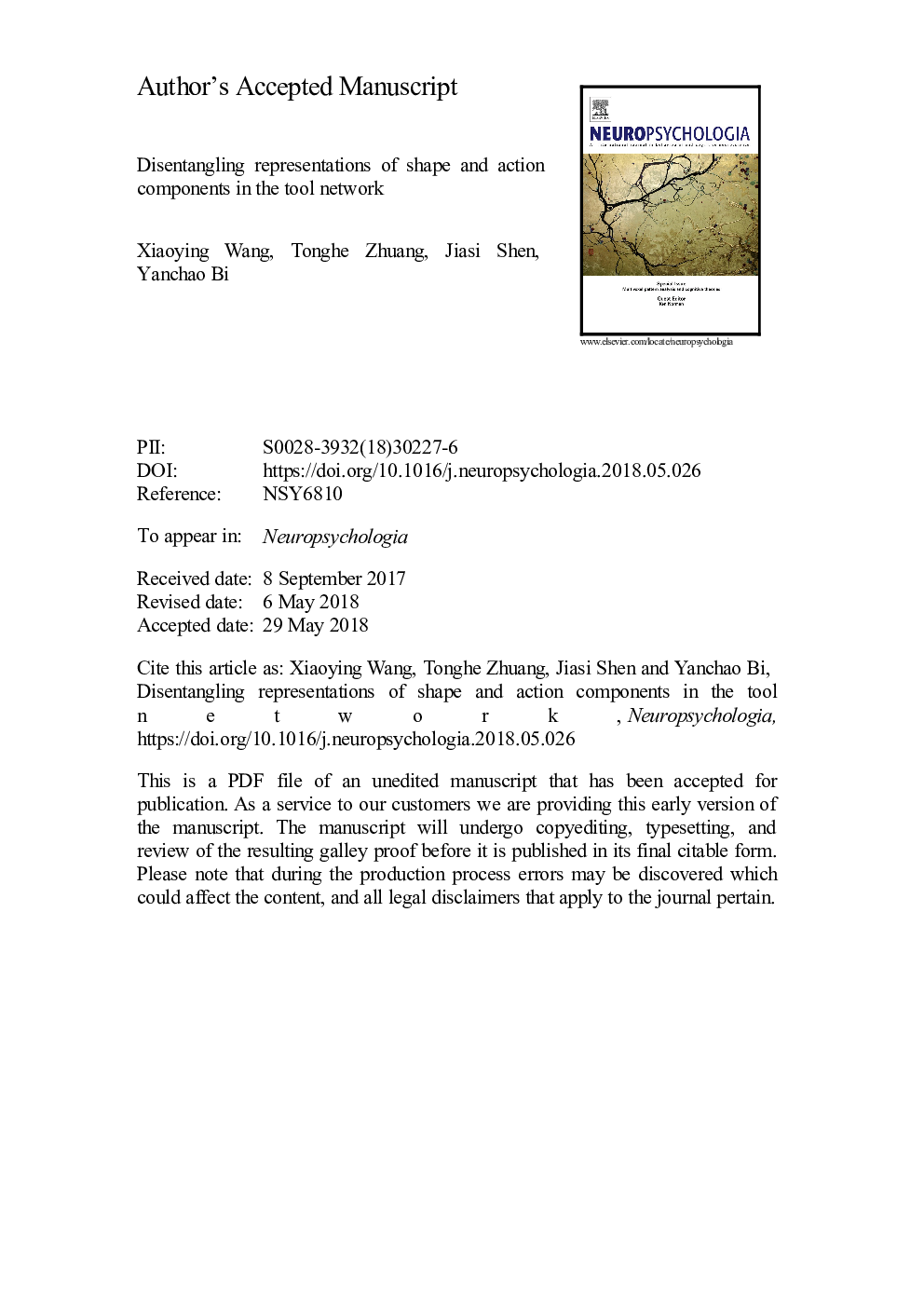| کد مقاله | کد نشریه | سال انتشار | مقاله انگلیسی | نسخه تمام متن |
|---|---|---|---|---|
| 7317294 | 1475538 | 2018 | 27 صفحه PDF | دانلود رایگان |
عنوان انگلیسی مقاله ISI
Disentangling representations of shape and action components in the tool network
ترجمه فارسی عنوان
نمایندگی های نمایشی شکل و اجزای عملکرد در شبکه ابزار
دانلود مقاله + سفارش ترجمه
دانلود مقاله ISI انگلیسی
رایگان برای ایرانیان
کلمات کلیدی
موضوعات مرتبط
علوم زیستی و بیوفناوری
علم عصب شناسی
علوم اعصاب رفتاری
چکیده انگلیسی
Shape and how they should be used are two key components of our knowledge about tools. Viewing tools preferentially activated a frontoparietal and occipitotemporal network, with dorsal regions implicated in computation of tool-related actions and ventral areas in shape representation. As shape and manners of manipulation are highly correlated for daily tools, whether they are independently represented in different regions remains inconclusive. In the current study, we collected fMRI data when participants viewed blocks of pictures of four daily tools (i.e., paintbrush, corkscrew, screwdriver, razor) where shape and action (manner of manipulation for functional use) were orthogonally manipulated, to tease apart these two dimensions. Behavioral similarity judgments tapping on object shape and finer aspects of actions (i.e., manners of motion, magnitude of arm movement, configuration of hand) were also collected to further disentangle the representation of object shape and different action components. Information analysis and representational similarity analysis were conducted on regional neural activation patterns of the tool-preferring network. In both analyses, the bilateral lateral occipitotemporal cortex showed robust shape representations but could not effectively distinguish between tool-use actions. The frontal and precentral regions represented kinematic action components, whereas the left parietal region (in information analyses) exhibited coding of both shape and tool-use action. By teasing apart shape and action components, we found both dissociation and association of them within the tool network. Taken together, our study disentangles representations for object shape from finer tool-use action components in the tool network, revealing the potential dissociable roles different tool-preferring regions play in tool processing.
ناشر
Database: Elsevier - ScienceDirect (ساینس دایرکت)
Journal: Neuropsychologia - Volume 117, August 2018, Pages 199-210
Journal: Neuropsychologia - Volume 117, August 2018, Pages 199-210
نویسندگان
Xiaoying Wang, Tonghe Zhuang, Jiasi Shen, Yanchao Bi,
